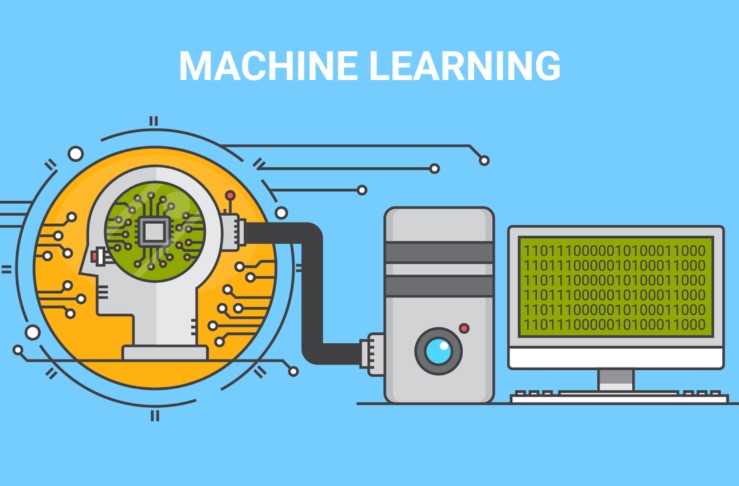
Introduction to Machine Learning Techniques – A Beginner’s Guide

Many different machine-learning techniques can be used to help computers learn from data. Understanding the basics of each method before you begin using them is essential.
There are several machine learning algorithms, all with unique strengths and weaknesses. Each class is better for specific data sets or tasks.
Neural Networks
Neural Networks are computer programs that use algorithms to model and understand data, similar to how a brain works. They can recognize patterns and correlations in raw data, cluster and classify it, and – over time – learn to improve themselves. That is why it is essential to know what are machine learning techniques so that it can be used to help computers learn from that data.
In the most straightforward architecture, an input layer sends data to hidden layers and receives feedback. These feedback loops can train a neural network to make predictions or identify patterns in images, text, and time-series data.
Each neuron’s weights and thresholds are adjusted during learning to produce the same results consistently. They are initially set to random values, which change with each new iteration as the network learns more about what data makes what outputs.
Once the neural network has trained itself to make these predictions, it can apply them to real-world situations. It can then analyze various data sets, such as weather forecasts or stock market trends.
It can even analyze human emotions and behaviors, such as social media posts. Neural networks are an essential component of many advanced artificial intelligence applications, and they are now a critical part of many industries, including law and finance.
Genetic Algorithms
Genetic algorithms are search-based metaheuristics that use the principles of natural selection to find solutions to problems. They are a subset of a larger field of algorithms called Evolutionary Computation (EC).
In general, genetic algorithms begin by generating a population of individuals. Each individual is characterized by a set of parameters known as genes. These parameters are represented as a string of numeric values, or more commonly, in a floating point representation.
Various variation operators are then applied to the population. Among the most important are crossover and mutation. Both crossover and mutation increase the diversity of the people and enhance the likelihood that individuals will generate helpful solutions.
The fitness function is computed for each chromosome, and the fittest chromosomes are selected. These chromosomes with high fitness values are allowed to reproduce in the next generation.
If the fitness of an individual decreases significantly, the algorithm terminates. This ensures that the new generation produces similar offspring from the previous generation.
Support Vector Machines
Support vector machines (SVMs) are one of the most popular supervised learning algorithms. They are used for classification and regression problems. They can also be used to detect outliers.
SVMs divide data points into two classes and create a line that best separates the tags. This line is called the decision boundary.
The goal is to find the dividing line that has the highest margin. This means the line should separate the data points with the most significant distance between them. This is like a city planner drawing “roads” throughout a city, separating the districts with roads on each side.
An SVM uses “support vectors” data points to help orient the line. It calculates the margins between each data point and the dividing line.
These margins are calculated using a kernel function. A function maps the training points into a high-dimensional space and can be nonlinear or linear.
Various functions are used in SVMs, including polynomial, radial basis function, sigmoid, and hyperbolic tangent. They can be tuned with a tuning parameter known as gamma.
Linear Regression
Linear Regression is one of the most commonly used machine learning algorithms. This is because it is simple to implement and has many real-world applications.
Whether you’re using it to predict response or explain a trend in data, linear Regression is an essential tool for evaluating data and establishing a definite relationship between two or more variables. It is also used for forecasting and time series modeling.
Regression models fit a line to a dataset that best describes the relationship between explanatory and dependent variables. The line is called the “line of best fit” and tries to minimize the sum of squares of its residuals.
It is important to remember that only some data points will be a perfect fit for a Linear Regression model. This is why you must remove noise, ensure that your input and output variables are Gaussian, and avoid overfitting.
Another important consideration is ensuring that the data points in your training set are well-matched to the data in your test set. This can be done through cross-validation or regularization.
Random Forest
Random Forest is a machine learning algorithm that can be used for classification and Regression. It is a popular choice amongst data scientists because it has several advantages, including its high accuracy, robustness, versatility, and efficiency.
It is also known for reducing overfitting and is less sensitive to noise in data. It also provides a measure of feature importance, which can be helpful for feature selection and data interpretation.
In addition to being a popular tool, Random Forest is relatively easy to use and can be customized to fit specific datasets. It also offers a range of parameters, such as the maximum depth of each tree, which can help users build models that work best for their particular applications.
Another essential characteristic of Random Forest is that it reduces overfitting by averaging multiple decision trees. This is an excellent solution for classification and regression problems, as it helps increase predictions’ accuracy while significantly lowering overfitting.
However, it also has a few limitations and is often only suitable for some data sets. This is because it requires a lot of memory on large projects, making it slower than other algorithms.